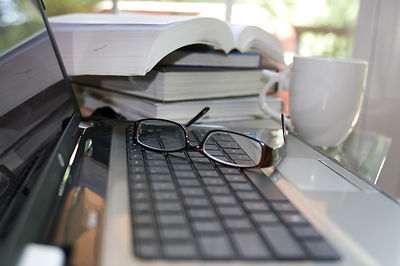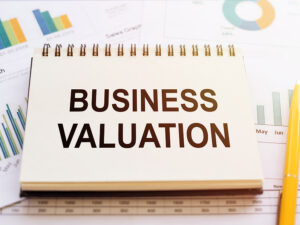Home Office Deductions in the COVID-19 Era
Oct 29, 2020

Have you been working from home during the COVID-19 crisis? Join the club. Approximately 42% of the American workforce is currently working from home full-time, according to a recent study by the Stanford Institute for Economic Policy Research. Only 26% are working on business premises — and many of those are essential workers, such as public servants and health care workers, who can’t work from home.
People who have transitioned to work-from-home arrangements may wonder whether they can claim a federal income tax deduction for home office expenses. Under current law, you’re not allowed to deduct these expenses — unless you’re self-employed. However, things could change if Congress grants additional COVID-19-related tax relief.
How the Rules Have Changed
For 2018 through 2025, the Tax Cuts and Jobs Act (TCJA) suspended write-offs for miscellaneous deductions that were formerly subject to the 2%-of-AGI rule. So, under current federal-income-tax law, an employee’s home office expenses aren’t deductible.
Before the TCJA, an employee could potentially claim itemized deductions for unreimbursed employee business expenses, including home office expenses — if the office was used for the convenience of the employer. However, unreimbursed home office expenses had to be combined with other miscellaneous expenses, such as union dues and fees for investment advice, tax advice and tax preparation. If your total miscellaneous expenses exceeded 2% of your adjusted gross income (AGI) for the year, you could write off the excess — but only if you itemized deductions.
The old pre-TCJA rules are scheduled to go back into effect in 2026, unless Congress extends the TCJA provisions.
Better Story for the Self-Employed
Self-employed people can still deduct home office expenses for federal income tax purposes under the same rules that applied before the TCJA. Specifically, home office deductions are allowed if you use part of your residence during the tax year regularly and exclusively as:
- A principal place of business, or
- A place to meet with customers or clients.
In the case of a separate structure — such as a converted barn, pool house or detached garage — deductions are allowed if you simply use the space regularly and exclusively for any business purpose.
Important: The term “exclusively” means you use the office space only for business purposes for the entire year.
A home office qualifies as your principal place of business if most of your income-earning activities occur there. It can also be your principal place of business if you use it to conduct administrative or management functions, such as bookkeeping and processing invoices, and you don’t conduct those functions at any other fixed location.
The best way to prove regular and exclusive use is to take photos of the office space. If all that can be seen in your office is your desk, computer, bookshelves and other office equipment, the IRS will be hard-pressed to challenge your write-offs. However, you won’t necessarily be disqualified for having a couch, some chairs, a television, a bathroom and even a wet bar in your home office. After all, these things can be found in the offices of many corporate executives.
Rules for Direct Expenses
Self-employed expenses that are directly allocable to the home office space, such as repair and maintenance costs, are fully deductible as long as you don’t run afoul of the business income limitation. That rule limits your allowable home office deductions to the gross income from your business activity reduced by:
- Other expenses for which deductions are allowed in the absence of business use (such as home mortgage interest and real estate taxes), and
- Business deductions that aren’t allocable to the use of the home (such as advertising and supplies).
If some of your home office deductions are disallowed under this business income limitation, the disallowed amount is carried forward to the following tax year, subject to the same limitation in that year.
Rules for Indirect Expenses
You can also deduct indirect home office expenses. Examples include:
- Utilities,
- Property taxes,
- Casualty insurance premiums,
- Homeowner association fees,
- Security monitoring,
- Depreciation for a residence that you own, and
- Rent for a rented residence.
A percentage of these expenses can be allocated to the home office space based on square footage or the number of rooms in the residence (assuming all the rooms are of similar size). Indirect expenses are also subject to the business income limitation.
Important: You aren’t required to own your residence to claim self-employed home office deductions. You can deduct allowable expenses from a home that you rent (including a percentage of the rent), if you meet the regular-and-exclusive-business-use rules for the home office part of the residence.
Special Rule for Inventory Storage Space
Self-employed expenses allocable to space in your residence that’s regularly used for storing inventory or product samples for a retail or wholesale product sales business are deductible if the space is the sole fixed location of the business.
In this scenario, exclusive use of the space is not required, but regular use is required. For example, it’s OK if you use part of your den to store inventory.
Daycare Businesses Also Have a Special Rule
You can claim home office deductions for self-employed expenses allocable to space that’s regularly used for your business of providing daycare for:
- Children,
- People age 65 or older, and
- Physically or mentally disabled individuals.
For these activities, exclusive use of the space is not required, but regular use is required. For example, it’s OK if you use your kitchen or den for a daycare business.
Simplified Method Is Available
A few years ago, the IRS introduced a simplified method for calculating home office deductions. It allows you to annually deduct $5 per square foot of space that’s used for business, limited to 300 square feet. The advantage of the simplified method is that you need not keep proof of your actual home office expenses.
The disadvantage is that your maximum deduction is limited to only $1,500 ($5 × 300). Self-employed individuals who choose to use the simplified method must still satisfy all the home office deduction eligibility requirements explained earlier.
Clearing the Hurdles
Employees are currently out-of-luck when it comes to deducting home office expenses. However, for a self-employed individual, federal income tax home office deductions can be a major tax-saver. In most cases, the biggest hurdle for a self-employed person is meeting the regular-and-exclusive-business-use requirement for the office space for the whole year. Contact Kirsch CPA Group at 513.858.6040 for more information.
Sign Up for Email Updates
Accounting & Financial News

Business Valuations Must Look to the Future, Not the Past
Historical financial performance is just one piece of the business valuation puzzle. While it provides a starting…





